#prince vikramaditya
Explore tagged Tumblr posts
Text

—A Crown of Wishes (2017), by Roshani Chokshi
#gauri x vikram#princess gauri#jewel of bharata#prince vikramaditya#fox prince#quotes#a crown of wishes#the star touched queen series#roshani chokshi#the sound of laughter
3 notes
·
View notes
Text
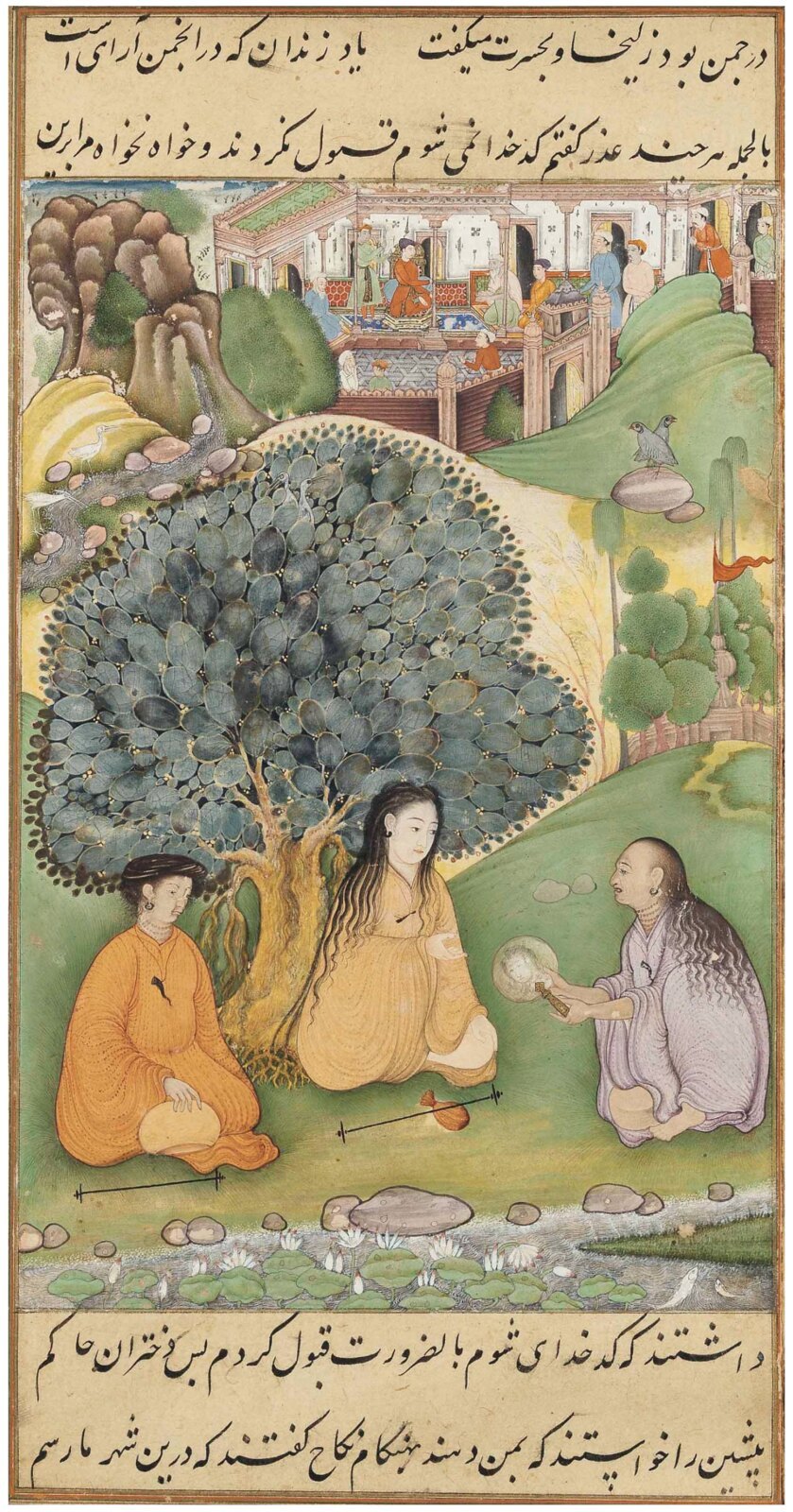
Prince Mrigank Consults an Astrologist with a Divine Mirror, an Illustration from Dvadasa Bhava (watercolor with golden inserts on paper, c.1600s) The illustration is from the Persian translation of an ancient Sanskrit text known as Dvadasa Bhava (Twelve Existences). The narrative is focused on Vikramanka who could be interpreted as either the Gupta king Chandragupta II (c. 380-415 AD) or alternatively the Western Chalukyan king Vikramaditya VI (c .1076-1126 AD). Prince Mrigank is one of the main characters in the narrative.
10 notes
·
View notes
Text
Events 11.5 (before 1940)
1138 – Lý Anh Tông is enthroned as emperor of Vietnam at the age of two, beginning a 37-year reign. 1499 – The Catholicon, written in 1464 by Jehan Lagadeuc in Tréguier, is published; this is the first Breton dictionary as well as the first French dictionary. 1556 – Second Battle of Panipat: Fighting begins between the forces of Hem Chandra Vikramaditya, the Hindu king at Delhi and the forces of the Muslim emperor Akbar. 1605 – Gunpowder Plot: Guy Fawkes is arrested in the cellars of the Houses of Parliament, where he had planted gunpowder in an attempt to blow up the building and kill King James I of England. 1688 – Prince William III of Orange lands with a Dutch fleet at Brixham to challenge the rule of King James II of England (James VII of Scotland). 1757 – Seven Years' War: Frederick the Great defeats the allied armies of France and the Holy Roman Empire at the Battle of Rossbach. 1768 – The Treaty of Fort Stanwix is signed, the purpose of which is to adjust the boundary line between Indian lands and white settlements set forth in the Royal Proclamation of 1763 in the Thirteen Colonies. 1780 – French-American forces under Colonel LaBalme are defeated by Miami Chief Little Turtle. 1811 – Salvadoran priest José Matías Delgado rings the bells of La Merced church in San Salvador, calling for insurrection and launching the 1811 Independence Movement. 1828 – Greek War of Independence: The French Morea expedition to recapture Morea (now the Peloponnese) ends when the last Ottoman forces depart the peninsula. 1834 – Founding of the Free University of Brussels by Pierre-Théodore Verhaegen. 1862 – American Civil War: Abraham Lincoln removes George B. McClellan as commander of the Army of the Potomac. 1862 – American Indian Wars: In Minnesota, 303 Dakota warriors are found guilty of rape and murder of whites and are sentenced to death. Thirty-eight are ultimately hanged and the others reprieved. 1872 – Women's suffrage in the United States: In defiance of the law, suffragist Susan B. Anthony votes for the first time, and is later fined $100. 1881 – In New Zealand, 1600 armed volunteers and constabulary field forces led by Minister of Native Affairs John Bryce march on the pacifist Māori settlement at Parihaka, evicting upwards of 2000 residents, and destroying the settlement in the context of the New Zealand land confiscations. 1895 – George B. Selden is granted the first U.S. patent for an automobile. 1898 – Negrese nationalists revolt against Spanish rule and establish the short-lived Republic of Negros. 1911 – After declaring war on the Ottoman Empire on September 29, 1911, Italy annexes Tripoli and Cyrenaica. 1912 – Woodrow Wilson is elected the 28th President of the United States, defeating incumbent William Howard Taft. 1913 – King Otto of Bavaria is deposed by his cousin, Prince Regent Ludwig, who assumes the title Ludwig III. 1914 – World War I: France and the British Empire declare war on the Ottoman Empire. 1916 – The Kingdom of Poland is proclaimed by the Act of 5th November of the emperors of Germany and Austria-Hungary. 1916 – The Everett massacre takes place in Everett, Washington as political differences lead to a shoot-out between the Industrial Workers of the World organizers and local police. 1917 – Lenin calls for the October Revolution. 1917 – Tikhon is elected the Patriarch of Moscow and of the Russian Orthodox Church. 1925 – Secret agent Sidney Reilly, the first "super-spy" of the 20th century, is executed by the OGPU, the secret police of the Soviet Union.
1 note
·
View note
Text
The Story of Panna Dai – A Tale of Ultimate Sacrifice
Panna Dai (Panna Dhai) is remembered in Indian history as the epitome of loyalty, sacrifice, and bravery. She was a nursemaid in the royal court of Mewar (Rajasthan) and is famous for sacrificing her own son to save the young prince Udai Singh, ensuring the continuation of the Sisodia dynasty. let us discuss about panna dhai ki kahani
The Background
🔹 Time Period: 16th century (Rana Sanga’s reign and after) 🔹 Kingdom: Mewar (Chittorgarh, Rajasthan) 🔹 Prince Udai Singh: The future ruler of Mewar 🔹 Banbir Singh: The usurper and conspirator
After the death of Maharana Sanga, his son Rana Ratan Singh became the ruler of Mewar but was assassinated. His brother, Maharana Vikramaditya, then ascended the throne but was later killed due to his ineffective rule. This left Udai Singh, the youngest prince, as the rightful heir to the throne. However, his own uncle Banbir Singh wanted to seize power and plotted to kill him.
Panna Dai’s Ultimate Sacrifice
Panna Dai was the trusted nursemaid of Prince Udai Singh. When Banbir Singh decided to kill all royal heirs to take the throne, she came to know of his evil intentions.
One fateful night, Banbir stormed into the palace, killing everyone in his path. Realizing the imminent danger to Udai Singh, Panna Dai quickly hid him in a basket and smuggled him out of the palace. To deceive Banbir, she placed her own son, Chandan, on the prince’s bed, knowing well that he would be killed in Udai Singh’s place.
As expected, Banbir, in his blind ambition, mercilessly murdered Chandan, believing he had eliminated Udai Singh. Meanwhile, Panna Dai secretly took the young prince to Kumbhalgarh, where he was safely raised under the protection of trusted allies.
Udai Singh's Return and Legacy
Years later, with the help of loyal Rajputs, Udai Singh reclaimed the throne of Mewar. He later founded the city of Udaipur, which became a significant center of Rajput power.
Panna Dai, however, never accepted a royal position or reward for her sacrifice. Instead, she chose to live in solitude, mourning the loss of her own son, whom she had given up for the sake of duty and the greater good of Mewar.
The Legacy of Panna Dai
Panna Dai’s story is an extraordinary example of selflessness, patriotism, and loyalty. She placed the honor of Mewar above personal loss, making an unimaginable sacrifice to ensure the survival of the Sisodia dynasty.
Even today, her name is honored in Rajasthan’s folklore, history, and cultural heritage. Schools and institutions in India recognize her as a symbol of supreme devotion and bravery.
👉 "No sacrifice is greater than the one made for duty and honor." – The legacy of Panna Dai
you can also watch mahendra mumal prem katha video in our channel.
0 notes
Text
How did Mihira got the name Varaha Mihira?
Astrology is a fantastic science that needs Logic and Intuition and last but not the least the Gift of God. Don't take my word - read this real account and come to your own conclusions - this is real astrology...hope it inspires real Astrologers and hope it shows the light of Jyotish to the sceptics...Mihira was a brahmana, the son of Aditya Dasa, from the region of Avanti, near present day Ujjain, in Western India. He was instructed in astrology by his father and was a
devout worshipper of Surya Narayana, that is, Krsna who manifests as the Sun. By performing severe austerities to please Surya Narayana, Mihira got blessed with knowledge of ganita, hora, and samhita.Mihira was one of the Nine Gems, navaratna, in the court of the great king, Vikramaditya of Ujjain. He was greatly honored by the king for his vast learning and correct predictions. Once, after the birth of the King's son Mihira was asked to make predictions about the prince's future. Going into meditation after studying the chart Mihira "observed that a serious and irremediable danger beset the path of the longevity of the royal child and that he would be killed by a varaha, or boar, on a particular day in a certain month of his 18th year and no human remedies could save the prince from the jaws of death."Having learnt of this danger to his son from his most reliable of court astrologers, Vikramaditya consulted with Bhatti, his Chief Minister. It was decided that a special palace would be constructed with stupendous walls 80 feet high. Ten thousand elite troops would patrol both inside and outside the property as well as in the palace. Such careful watch was taken of the palace that not even a cat or rat could enter the compound what to speak of a wild boar. Every precaution was taken and the prince was under constant guard and practically under house arrest, he was not allowed to leave his compound for any reason. In fact he was ensconced on the seventh floor and not allowed to go to a lower floor. The precautions were so thorough that they boasted that the prince may die but certainly not by the agency of a varaha.After such security measures were put into place Mihira was asked if he would like to reconsider his former prediction. He emphatically stated that there was nothing that could save the boy. As the date grew near he was again asked to reconsider, and again gave the same reply. Tension began to mount, not so much for the sake of the boy but for the reputation of Mihira. His detractors thought that Mihira's reputation exceeded his ability, and though the boy might die, the possibility of it be caused by a boar was so remote that Mihira would be publicly disgraced. Even his friends, who had implicit faith in him and knew of his great abilities, had doubts as to how his prediction would be successful, because it was impossible for even a rat to move about undetected in that palace.On the fateful day Vikramaditya held court. Reports were brought to him every hour on the safety and health of the Prince, now 18 years old. All the chief pandits were assembled as well as the navaratnas, the nine greatly learned men, of the King's court. The whole city was waiting for the result of Mihira's prediction. Would it come true or not? The time of death had been fixed at 5:00 PM in the afternoon. The King, though a great admirer of Mihira, was beginning to doubt Mihira's abilities. With a condescending smile he addressed Mihira, did he still want to maintain his previous prediction that the boy should be killed by a wild boar this afternoon. Did any new calculation possibly change his mind, would the child just die, this was possible, but death by a wild boar would be impossible. The King suggested that Mihira gracefully back down from his former stance, without losing face. The King vowed that if the impossible happened he would give Mihira the highest honor and bestow on him the golden and be-jeweled Royal ensign or emblem, the Varaha, wild boar, that was currently on his crown and transfer it to Mihira's head-dress and that for posterity he would henceforth be given the title Varaha Mihira. Everyone applauded the King.All eyes focused on Mihira. He rose and gave a speech in which he deprecated his own learning, that unfortunately no great rishis such as Vasishta were present to reverse the karma of the Prince. He took a vow that if his prediction failed he would never practice astrology again, he would never enter the court of the king, and indeed, would leave Ujjain altogether and go deep into the forest to practice tapasya, austerities, till his last day. But Mihira stated that indeed the death would come true as predicted, there could be no thwarting of fate and the Prince would be killed by a boar. He then calmly sat down.In the afternoon at 2:00 PM the King again convened his court. Senior military commanders came every half hour with news of the Prince. He was hale and hearty. Everything was going smoothly. The King had given orders that the guard be on the highest alert and was confident that no harm could befall his son. But Mihiracarya was totally calm, how could this be so, in only a few hours his prediction would be proven wrong, yet he was still placid. Time went on, a half hour after the appointed time of death a guard reported that there was no disturbance in the Prince's palace. Mihira calmly told the King that the boy had already died at the appointed time and they should go see for themselves. Just then another guard came to report that all was still peaceful in the palace. On the way to the palace other guards confirmed that all was quite and calm at the palace. It was now about 6:00 PM and the King told Mihira that his prediction must have been wrong because nothing at all wrong had been reported, he couldn't believe that his officers were liars.Mihira replied: "Victorious Monarch! the prince has died at the hour, minute, and second, I have named and none of your watchmen has noticed it. It is a sad event no doubt but it has happened and your son is lying dead in a pool of blood, unnoticed by his watchmen and personal companions, and you will see the truth of my prediction. Let us go and examine."On entering the palace they noticed on every floor that peace and calm prevailed. On the 7th floor they found a dozen or so of the Prince's friends engaged in assorted games such as chess. When the Emperor made inquiries about the Prince, they all replied that he had been playing with them a little while ago and that he was quite hale and hearty and that he had just gone out to take some air on the open terrace of the 7th floor.Mihira said: "The Prince must be lying dead in a pool of blood caused by the injuries of a boar, and if you go to the terrace you will be shocked to find him dead as predicted by me. This wonderful prediction is not mine. My knowledge is too humble and too limited to make such inconceivable and surprising predictions. I have made all my predictions under the guidance of Surya Narayana. Could such predictions inspired under His grace ever fail?"They all went to the terrace and saw with horror and sorrow the Prince lying dead on a cot in pool of blood. He was disfigured by the iron hooves of the artificial boar-the Royal Emblem-that was attached to the flag staff. Everyone was thrown into simultaneous gloom and ecstasy by the successful prediction. Vikramaditya awarded Mihira with the Royal Emblem and he was hence forth called Varaha Mihira.The Prince's death had transpired in the following way. At about 4:00 PM, the Prince, who had been playing with his friends, began to feel a sort of oppression in his chest and giving over his cards to a nearby friend asked him to play in his place. He then rose without complaint and went out to the terrace. A tall flag staff, emblem of Royalty, rose high in the air, it had an artificial boar attached to its top.As this emblem of royalty was affixed to all important turrets and towers of all the Emperor's palaces no one took any notice of them. Near the flag staff was a cot with soft cushions for the Prince to take rest whenever he felt fatigued. The Prince feeling tired while playing games with his friends came to lay down in the cool air. At 5:00 PM precisely, a very strong gust of wind knocked loose the iron boar. This fell down onto the Prince who was lying on his back. The hooves struck severely against his breast and stomach and the tusks struck his head and mouth. The Prince lost copious amounts of blood and died immediately. The mattress on the cot absorbed the sound of the crash so no one heard it fall. And as the Prince would often go to the terrace, and as the game was very absorbing, no one noticed the Prince's absence.
#varaha#vedic astrology#Vedic Jyotish Online#vedic astro observations#astrology numerology vedicastrology#astrology#astro notes#predictive astrology#aries astrology#astrophysics#astro posts
2 notes
·
View notes
Text
Varahamihira: The ancient astrologer, astronomer and mathematician
His encyclopaedic knowledge and his lively presentation of subjects, as dry as astronomy, made him a celebrated figure.
writes MEERA S. SASHITAL.
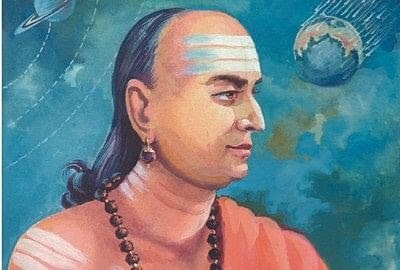
Even thousands of years before, India had become famous and reached its pinnacle in astrological and astronomical sciences. Ancient Astrological works had been translated into many foreign languages. Ibn Batuta and Al Baruni were two prominent Arab travellers who had visited ancient India specially to pursue Astrology. By their translations they had induced German scholars to come to India to study Astrology and Vedic literature. Varahamihira was one of the only renowned Indian Astronomer, Mathematician and Astrologer whose name became a household word throughout India and it is said his near contemporaries Aryabhata and Brahmagupta even did not match with the popularity of Varahamihira.
Varahamihira was born in 499 A.D. into a family of Brahmins settled at Kapittha, a village near Ujjain. His father, Adityadasa was a worshipper of the Sun god and it was he who taught Varahamihira astrology. On a visit to Kusumapura (Patna) young Varahamihira met the great astronomer and mathematician, Aryabhata. The meeting inspired him so much the he decided to take up astrology and astronomy as a lifetime pursuit. At that time, Ujjain was the centre of learning, where many schools of arts, science and culture were flourishing in the prosperity of the Gupta reign. Varahamihira, therefore, shifted to this city, where scholars from distant lands were gathering. In due course, his astrological skills came to the notice of Vikramaditya Chandragupta ii, who made him one of the Nine Gems of his court.
It is interesting to note as to how Varaha-mihira got the title ‘Varaha’. King Vikramaditya was aghast at the royal astrologer Mihira’s prediction. He looked round the well-lit and crowded court and asked in anguish “Can it be true?” There was no reply. There was pin-drop silence as all were shocked beyond words at the royal astrologer’s prediction. Breaking the silence and with full of grief himself, the royal astrologer confirmed the prediction, “The position of the planets predicts the death of the prince at the age of18.” Though the King controlled his emotions, the Queen could not contain herself and wailed “My lord, you should see to it that this prediction proves false.”
Though the King had full faith in his astrologer Mihira, he took every precaution to protect and save his son. But on the predicted day, a boar killed the prince. When the news reached the King, he summoned Mihira to his court and told him “I am defeated, you have won, you have won.” The astrologer was as sad as the king, and he replied “My Lord. I have not won. It is the science of astronomy and astrology that has won!” “Whatever it may be, my respected astrologer,” said the King. “It has convinced me that your science is nothing but truth. And for your mastery of the subject, I now confer upon you the Magadha kingdom’s greatest award, the emblem of the varaha (boar).” So from that time Mihira came to be known as Varahamihira.
Varahamihira was learned in the Vedas, but he was not a blind believer in the supernatural. He was a scientist. Like Aryabhata before him, he declared that the earth was spherical. In the history of science he was the first to claim that some “force” might be keeping bodies stuck to the round earth. The force is now called gravity.
Scholars are of the view that Varahamihira had constructed “Meru Stambh”, what is presently famous as Qutub Minar, 2200 years ago, for doing research on astronomy. It was a seven storied structure constructed in the middle of a lake. These seven stories symbolized seven planets and the structure also had 27 windows symbolizing twenty-seven constellations. Black stone has been used in the construction of Meru Stambh so that there was darkness inside. The main entrance faces North and is slanted slightly backward towards South at an angle of five degrees. Its foundation is 26 yards deep and its actual height was 84 yards but which now has been reduced to 76 yards. Britishers had demolished the topmost storey to prevent the structure from falling as the slant was more prominent at the top and it caused threat to the structure.
Varahamihira’s main work is the book Pancha Siddhantika (“Treatise on the five Astronomical Canons gives us information about older Indian texts which are now lost). The work it seems is a treatise on mathematical astronomy and it summarises five earlier astronomical treatises, namely, the Surya Siddhanta, Romaka Siddhanta, Paulisa Siddhanta, Vasishtha Siddhanta and Paitama Siddhanta. Panch Siddhanta holds a prominent place in the realms of astronomy. He proposed that the Moon and planets are lustrous not because of their own light but due to sunlight. It is acclaimed that Pancha Siddhantika of Varahamihira is one of the most important sources for the history of Hindu Astronomy from before the time of Aryabhata.
Another important contribution of Varahamihira is the encyclopaedic Brihat-Samhita. It covers wide ranging subjects of human interest, including astrology, planetary movements, eclipses, rainfall, rainfall, clouds even domestic relations, gems, pearls and rituals. The volume expounds on gemstone evaluation criterion found in the Garuda Purana, and elaborates on the sacred Nine Pearls from the same text. It contains 106 chapters and is known as the “great compilation”.
Being an Astrologer he wrote on all the three main branches of Jyotisha astrology. It covered Brihat Jataka which is considered as one of the five main treatises on Hindu astrology on Horoscopy; Laghu Jataka, Samasa Samhita, Brihat Yogayatra, Yoga yatra, Tikkani Yatra, Lagu Vivaha Patai,Daiiivajna Vallabha (apocryphal). His son Prithuyasas also contributed in the Hindu Astrology; his book Hora Sara is famous book on Horoscopy.
Varahamihira’s mathematical work included the discovery of the trigonometric formulas. He improved the accuracy of the sine tables of Aryabhata l. He defined the algebraic properties of zero as well as of negative numbers. Furthermore, He was among the first mathematicians to discover a version of what is now known as the Pascal’s triangle. He used it to calculate the binomial coefficients.
Varahamihira made some significant observations in the field of ecology, hydrology and geology too. His claim that plants and termites serve as indicators of underground water is now receiving attention in the scientific world. He was also a prolific writer. His mastery of Sanskrit grammar and poetic metre enabled him to express himself in a unique style. His encyclopaedic knowledge and his lively presentation of subjects, as dry as astronomy, made him a celebrated figure. His treatise such as Pancha Siddhantika (Five Principles), Brihatsamhita (Master Collection), Brahjataka (Astrological work) have put him on as high a pedestal in Astrology as Kautilya’s in Political philosophy, Manu’s in Law or Panini’s in Grammar.
It is learnt, Varahamihira humbly said about his own treatises: “The science of Astrology is a vast ocean and is not easy for everyone to cross it. My treatises provide a safe boat.” Truly, even now they are acknowledged as masterpieces.
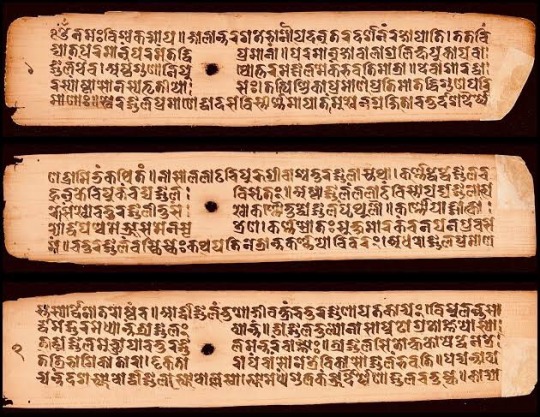

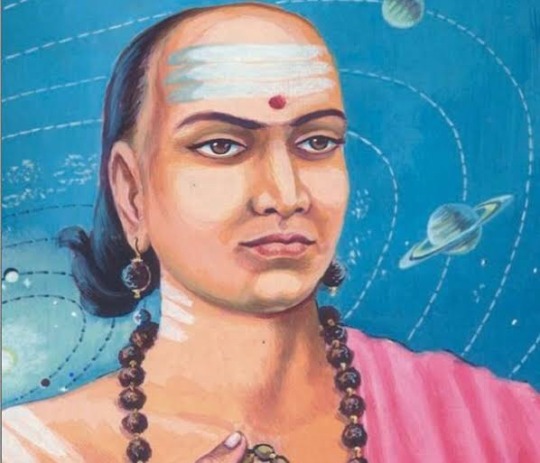
#Varahamihira#The Ancient#Ancient#Astrologer#Astronomer#Mathematician#Encyclopaedic#Aryabhata#Brahmagupta#499 A.D#Brahmins#Kapittha#Village#Ujjain#Patna#hinduism#hindus#hindudharma#Mihira#Queen#King#Prince#Lord#Maurya#aryabhatta#Astrology#sanatana
10 notes
·
View notes
Note
Nerdy desi gansey is everything I never knew I needed <3
nerdy desi gansey you get it !! i really do think you can take his character to so many interesting places by having him be south asian, when you consider how deeply his family’s insistence of “put on a smile, what will people think” has impacted gansey’s character. especially as a desi political family living in the USA. it’s great
normally, im actually not a fan of headcanoning characters as specific ethnicities solely due to family dynamic stereotypes (like for example, the point of — oh this family has communication issues/are perennial people pleasers they must be desi. I’ve seen it spring up a lot?) because while it’s absolutely true that a lottt of desi families have a general attitude of log kya kehenge it’s,ehhhh, always a slippery slope, you know? (this is of course different when people look at a character and go oh that’s relatable and can recognise similarities between their own and the character’s situations! i just mean in general) ESPECIALLY when the gansey family’s white privilege and generational wealth is in canon an deniable fact and privilege they have and utilise every chance they get, in particular as wealthy, white politicians in the united states!
HOWEVER all that said and done, nerdy desi gansey is a REALLY fun and interesting headcanon, for many reasons, including his relationship to his family!! (also elder sister whose already Accomplished and Shiny, and a younger brother who’s more of the eccentric free spirit child—this is like every modern-ish time Bollywood sibling dynamic😂)
also. rich desi private school boys who are from political dynasties? unspeakably annoying. TAKE IT FROM ME. I went to school in an area where there were several RICH, blazer requiring all-boys schools. theyre like prime aglionby candidates! unfortunately
ive seen a TON of Pakistani Gansey headcanons and they’re really all great!! Also have decided that, you know that throwaway line where the Ganseys go to Punjab mint farms for a photo op? actually they’re just visiting family in Pakistan :)
Also, I think Gansey with his love for history and mythology, would definitely be drawn into the rich history of the region if he was desi, the tales of Ashoka and Akbar and Vikramaditya and Jahangir, the princely southern kingdoms. Also lmao, model reconstructions of Harappan cities?? You BET there will be a mini Mohenjo-Daro within a month of a late night Indus Valley Civilisation deep-dive!! Ronan sits with him at 3 am once and has to listen to a couple hours of Ronan, they simply had ingenious drainage planning! He cries about granaries a little.
Also, I’m finding it absolutely hilarious to imagine Gansey failing at making a cup of tea for Malory in this scenario, or really anything with the tea he’s forced to drink in 300 Fox Way. because like. You know. Desi. Chai. Personally I’m not a big chai drinker but 😐 you gotta take low hanging headcanon/fruits when you can right? Gansey still fails to make a single cup of proper tea for Malory throughout the length of BLLB but he can rest easy knowing he has simultaneously disappointed the ghosts of his ancestors and made them unspeakably proud (disappointed cause he can’t make a single cup of tea, proud because hey oppressing the British? the dream)
#this didn’t have to be so long!!! but I got a little carried away#birdverse#gansey#Richard gansey#asks#anon#the raven cycle
15 notes
·
View notes
Text
Chandragupta Vikramaditya
Chandragupta (II) was the son of Dattadevi, the queen of Samudragupta. He was a very brave and mighty prince. After becoming the king, he assumed the title of Vikramaditya. Vikram means might or majesty and Aditya means sun. That is, Vikramaditya is called a person who is as majestic as the sun. Chandragupta Vikramaditya spread his majesty and majesty in the same way as the sun spreads its light in the whole world.read full story------
Also read ------- Adhunik Bharat Ka Itihas
3 notes
·
View notes
Text
Facts about Varahamihira – The Multi-Talented Genius Sage
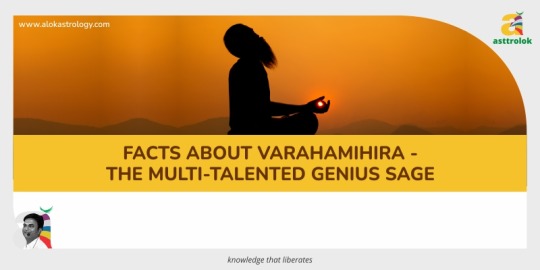
Varahamihira who is known to have lived from 505 CE to 587 CE in Ujjain was an astrologer, astronomer and polymath expert. Varahamihira lived in the Gupta Era and his subject of study was Encyclopedia. Avanti is his place of birth which in today’s day is known as Malwa in Madhya Pradesh, India. Varahamihira is considered to be one of the Navaratnas (nine jewels) from the Vikramaditya’s court.
Know more about the Varahamihira. Get an online astrology consultation by the world-renowned Astrologer Mr. Alok Khandelwal.
The esteemed legend
King Vikramaditya had 9 ministers, who were known as the 9 gems of the Kingdom. Each one was treated as 9 realms of their respective subjects and excelled in their respective fields. They contributed the knowledge of research to ancient India, like Medicine, Astrology, Astronomy, modern Architecture, Poetry, Grammar, Lexicography & Magic. The greatest Mathematician, Astronomer, Astrologer, whose contribution to Trigonometry & Astrology is unbeatable, is no other than “VARAH MIHIR”. The name seems to be a bit surprising, right? We will discuss here, how the name was changed from “MIHIR” to “VARAH MIHIR” and what was his inventions, discoveries and what makes him so great.
Read Also:- Weekly Rashifal from 28th March to 3rd April 2023
Prefix and the Sobriquet
As we all know heights can’t be touched without effort, for that it is needed to prove the eligibility. Like that, Mihir was not chosen as the minister in the kingdom from the beginning, but he earned this position due to his absolute prediction and which turned his name to “Varah Mihir”.
In the era of Vikramaditya, who is also known as Chandragupta-II in history, Mihir was so famous being a jyotshi and till that time, none of the predictions went wrong. Once the supreme King, called for Varah Mihir to his
court to verify his wisdom about Astrology in the presence of other ministers and Queen Virasena.
All the questions related to Astrology, asked by other ministers and members of the court, were properly answered by “Mihir” and the King pleased of such an unbeatable talent in his kingdom and finally asked to predict his future and his kingdom.
After going through the birth chart of the King, Mihir got silent and the entire court was staring at Mihir’s silence. Breaking the silence and with full of grief, the greatest astrologer confirmed his prediction that, the position of the planets says, the death of prince will happen at the age of 18.
The entire court got shocked with such prediction, but the queen did not believe this and disregarded Mihir. We all know King Vikramaditya is famous for his justice and in stories it is mentioned that Goddess Laxmi and Shanidev also came to Vikramaditya to verify his way of justice, that is another story, we may discuss any other day.
With a heart of stone, at that moment, the King asked Mihir to predict the exact date, time and reason of death and it was predicted as “the event will happen by a Boar [Varah in Hindi]” which was predicted before 6 years, when the prince was at age of 12. Before the predicted day, Mihir was again invited to the court and was requested to stay there till that date. King surrounded his city with proper boundaries and barricades and also his palace, increased the security for the prince and the palace and announced to kill if any boar is seen near the palace, means King was fully prepared to protect his son from attack of any boar.
At the exact predicted time, the sound of groaning came out of the prince’s room and it was seen that the Prince is about to die and died also in sometime. According to some scripts, it is mentioned as a boar which was coloured as white because of lime, entered into the room and killed the prince and other scripts say an idol of a boar fell down on the prince. But, both the scripts indicates to the same, the death was occurred by a boar.
The King announced the victory of Mihir and the failure of himself, but Mihir said,” this is not me, who won this or this was not any war. This is the Science of astrology and astronomy, which I predicted for a human being”.
And the king said, “I admire to the astrologer. The science you are talking about is nothing but Truth”. And for the mastery in this subject, the king conferred upon the greatest award, the emblem of “Varah”, and after that “Mihir” was renowned as “Varah Mihir”. If we can see the names of other rest ministers of Vikramaditya, we can understand they got some strange names, like “Betal bhatt”,” Amar-Simha”,”Khyapanak”. The suffix or prefix on their names, are nothing but the awards given by the King.
Read Also:- Most Compatible Signs of Zodiac According to Guna Milan
#astrology consultation#Best astrologer online consultation#Facts#Facts of Varahamihira#Genius Sage#history of VARAHAMIHIRA#information about Varahamihira#Varahamihira#vedic astrologer in usa#vedic astrology consultation#vedic astrology usa#asttrolok#astrology
0 notes
Text
At 46 pc BJP gets highest ever vote share in J&K, leads in 27 assembly segments
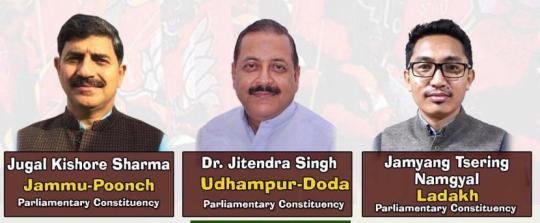
JAMMU: The BJP, which bagged three Lok Sabha seats in Jammu and Kashmir, has got its highest ever vote share of 46.4 per cent in the state, more than that of Congress, NC and PDP put together, as per EC data. The National Conference (NC), which swept the polls in the Kashmir region and bagged three seats, got just 7.89 per cent vote share. As per official data released by the Election Commission of India, the BJP has taken 46.4 per cent vote share by securing 16,48,041 votes out of total 3,479,155 votes polled in multi-phased elections in six Lok Sabha seats in the state. It is the highest ever vote share of the BJP in the state till now, officials said. The BJP, which won Jammu, Udhampur and Ladakh seats in the 2019 Lok Sabha polls, took lead in 27 assembly segments in these three constituencies of the Jammu and Ladakh region, the data said. There was increase of 12 per cent in the vote share of the BJP from 2014 Lok Sabha elections in which the saffron party polled 34.40 per cent votes, the data said. The BJP had bagged three seats of Jammu, Udhampur and Ladakh in 2014 polls. In the 2014 Assembly elections, the BJP got 23 per cent vote share, the data said. In the 2009 Lok Sabha polls, the BJP got only 18.61 per cent vote share. Union Minister Jitendra Singh won by 3.57 lakh votes defeating Congress’ Vikramaditya Singh, the son of Jammu and Kashmir’s last prince Karan Singh. Jitendra Singh polled 7,24,311 or 61.38 per cent votes. According to poll officials, it is the highest margin of victory for any successful candidate in Jammu and Kashmir till now. BJP’s Jugal Kishore defeated Raman Bhalla of the Congress by 3,02,875 votes in the Jammu seat. Kishore polled 8,58,066 votes (58.02 per cent). The party’s J T Namgyal won the Ladakh seat. He polled 42,914 votes (33.94 per cent) The Congress, which contested five seats in Jammu and Kashmir and lost all, polled 1,011,527 votes taking 28.5 per cent share of total votes polled, statistics said. The Congress has increased its vote share by 5 per cent but failed to covert it into seats. In the 2014 Lok Sabha elections, the Congress got 22.90 per cent vote share but failed to get any seat. In the 2009 Lok Sabha polls, the Congress bagged two seats with 19.11 per cent vote share. The NC polled 2,80,356 votes (7.89 per cent vote share) out of the total votes polled, it said. The party won in three seats of Srinagar, Anantnag and Baramulla. For the NC, Farooq Abdullah won Srinagar seat and got 1,06,750 votes out of a total electorate of 12,94,560. In North Kashmir’s Baramulla constituency, NC candidate Mohammad Akbar Lone, who won the seat, polled 1,33,426 votes. NC candidate Hasnain Masoodi, who won Anantnag seat, polled 40,180 votes. In the 2014 Lok Sabha elections, the NC got 11.10 per cent vote share but failed to get any seat. In 2009, the NC got 19.11 per cent vote share, bagging two seats. The Peoples Democratic Party (PDP) vote share dipped from 20.50 per cent in 2014, when it bagged three seats, to just 2.4 per cent (84,054 votes). It lost all three seats. In the 2009 Lok Sabha polls, the PDP got 20.05 per cent polls and also bagged one seat. Others took 12.2 per cent vote share (4,33,438 votes). As per data, BJP took lead in 27 assembly segments in Jammu, Udhampur and Ladak Lok Sabha seat, while they had won 24 seats in 2014 assembly polls. In Jammu Lok Sabha seat, which has 20 assembly segments, the BJP took lead on 15 assembly segments followed by the Congress on five segments. In Udhampur, BJP registered lead on 9 assembly segments out of total 16 segments, while the Congress scored lead on 7. In the Ladakh Lok Sabha seat, the BJP registered lead on 3 out of 4 assembly constituencies, it said. (PTI) Read the full article
0 notes
Text
Events 11.5 (before 1920)
1138 – Lý Anh Tông is enthroned as emperor of Vietnam at the age of two, beginning a 37-year reign. 1499 – The Catholicon, written in 1464 by Jehan Lagadeuc in Tréguier, is published; this is the first Breton dictionary as well as the first French dictionary. 1556 – Second Battle of Panipat: Fighting begins between the forces of Hem Chandra Vikramaditya, the Hindu king at Delhi and the forces of the Muslim emperor Akbar. 1605 – Gunpowder Plot: Guy Fawkes is arrested in the cellars of the Houses of Parliament, where he had planted gunpowder in an attempt to blow up the building and kill King James I of England. 1688 – Prince William III of Orange lands with a Dutch fleet at Brixham to challenge the rule of King James II of England (James VII of Scotland). 1757 – Seven Years' War: Frederick the Great defeats the allied armies of France and the Holy Roman Empire at the Battle of Rossbach. 1768 – The Treaty of Fort Stanwix is signed, the purpose of which is to adjust the boundary line between Indian lands and white settlements set forth in the Royal Proclamation of 1763 in the Thirteen Colonies. 1780 – French-American forces under Colonel LaBalme are defeated by Miami Chief Little Turtle. 1811 – Salvadoran priest José Matías Delgado rings the bells of La Merced church in San Salvador, calling for insurrection and launching the 1811 Independence Movement. 1828 – Greek War of Independence: The French Morea expedition to recapture Morea (now the Peloponnese) ends when the last Ottoman forces depart the peninsula. 1862 – American Civil War: Abraham Lincoln removes George B. McClellan as commander of the Army of the Potomac. 1862 – American Indian Wars: In Minnesota, 303 Dakota warriors are found guilty of rape and murder of whites and are sentenced to death. Thirty-eight are ultimately hanged and the others reprieved. 1872 – Women's suffrage in the United States: In defiance of the law, suffragist Susan B. Anthony votes for the first time, and is later fined $100. 1895 – George B. Selden is granted the first U.S. patent for an automobile. 1898 – Negrese nationalists revolt against Spanish rule and establish the short-lived Republic of Negros. 1911 – After declaring war on the Ottoman Empire on September 29, 1911, Italy annexes Tripoli and Cyrenaica. 1912 – Woodrow Wilson is elected the 28th President of the United States, defeating incumbent William Howard Taft. 1913 – King Otto of Bavaria is deposed by his cousin, Prince Regent Ludwig, who assumes the title Ludwig III. 1914 – World War I: France and the British Empire declare war on the Ottoman Empire. 1916 – The Kingdom of Poland is proclaimed by the Act of 5th November of the emperors of Germany and Austria-Hungary. 1916 – The Everett massacre takes place in Everett, Washington as political differences lead to a shoot-out between the Industrial Workers of the World organizers and local police. 1917 – Lenin calls for the October Revolution. 1917 – Tikhon is elected the Patriarch of Moscow and of the Russian Orthodox Church.
1 note
·
View note
Photo
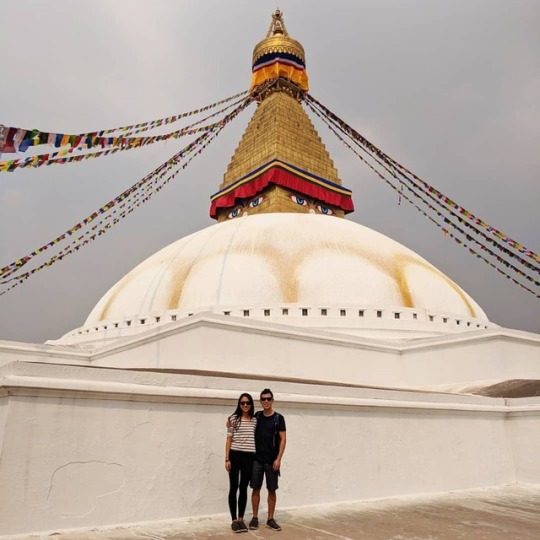
We've been wanted to visit Nepal 🇳🇵 for a while, and now we've finally made our way here 🙌! Our first stop was in Kathmandu. Here we visited Boudhanath, a Buddhist stupa built in the 6th century. Located on the ancient trade route from Tibet entering into the Kathmandu Valley, Tibetan merchants have rested and offered prayers here for many centuries. When refugees entered Nepal from Tibet in the 1950s, many decided to live around Boudhanath. According to the history of Nepal, the palace of King Bikramaditya (Licchavi King) once stood where the Narayanhity Palace currently stands. King Vikramaditya instructed that a Dhunge Dhara (traditional stone water tap) should be built in the southern part of the palace courtyard. But there was no sign of water from the Dhunge Dhara, so the king consulted astrologers. Astrologers suggested that a human sacrifice with a male candidate having Battis-Lakshanas (thirty-two perfections) should be performed. Only the king himself and his two princes were suitable candidates. So the king decided to sacrifice himself and ordered one of his sons to sacrifice him so that water would appear at the Dhunge Dhara. The king told his son that a man will be sleeping by covering his face and body, and to sacrifice him without looking at his face. After the son did so, he realized he had killed his own father. With regret and guilt he consulted with priests for a way to salvation. The priests told him to fly a bwo-khaa (a flying hen) from the top of nearby Sankhu Bajrayogini Temple, and it ended up landing where Boudhanath Stupa stands today. #nepal #kathmandu #nepal🇳🇵 #boudhanath #stupa #unesco #unescoworldheritage (at Boudhanath Temple) https://www.instagram.com/chauz3r/p/Bvxxd-ig9va/?utm_source=ig_tumblr_share&igshid=3c4qc64vwe6w
0 notes
Photo
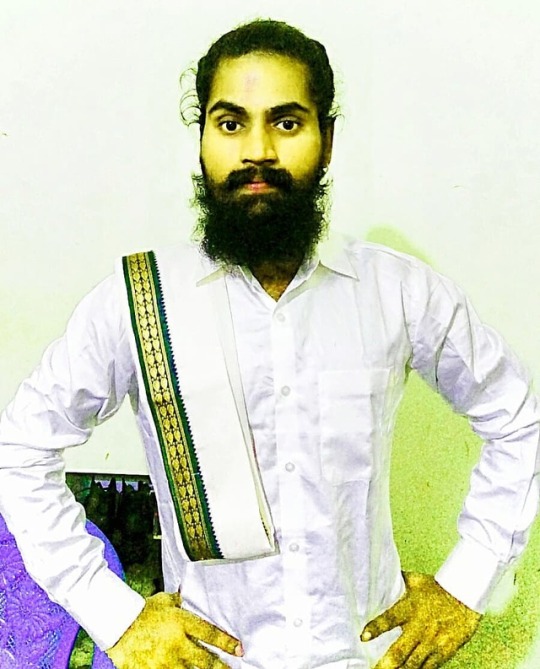
Prince VIKRAMADITYA https://www.instagram.com/p/BsfYGSgg2EjKVJrN9oSVPa5WE5pGg1nawJJdFI0/?utm_source=ig_tumblr_share&igshid=1i22rcqppa7xj
0 notes
Text
Worlds First Republic Malla Kingdom India 700 BC
New Post has been published on https://gyanyog.net/worlds-first-republic-malla-kingdom-india-700-bc/
Worlds First Republic Malla Kingdom India 700 BC
History of India might seem to be disorganised ,but a careful and patient study will show that the history of India is an integrated one and Kingdoms were interrelated.
Mostly through marriages.
The difficulty in identifying the early history lies in the fact that the identification of these intricate relationships.
Once we identify this ,the task becomes easier.
While I was trying to fix the date of King Vikramaditya,I stumbled upon the History of Samudra Gupta,father of Chandra Gupta II,who is popularly known as Vikramaditya.
But,as it is the wont,western historians dismiss most of the facts associated with Vikramaditya Chandra Gupta as legends.
Facts seem to indicate otherwise.
Vikramaditya’s grandfather,Chandra Gupta I married a princess from Lichavi Kingdom .
(Samudra Gupta was the son of Chandra Gupta I).
Malla reference may be found in Lichaavis.
This Kingdom coexisted with the most ancient Kingdoms of India,that is the Mahajanapadas,the Sixteen Kingdoms of India,which is mentioned in the Vedas.
The astonishing fact is that it was a Republic.
The roots of Lichavis may be traced back to Nepal,Varanasi.
These places are venerated in Buddhist texts.
The date of Malla Kingdom is between 700 to 300 BC!
‘ The Gupta emperor Chandragupta I married a Licchavi princess Kumaradevi and the legend Licchavayah is found along with a figure of goddess Lakshmi on the reverse of the Chandragupta I-Kumaradevi type gold coins of Samudragupta. In the Allahabad Pillarinscription of Samudragupta, he is described as the Licchavidauhitra (the grandson of the Licchavis from his mother’s side). These probably suggest Licchavi occupation of Magadha immediately before the rise of the imperial Guptas, although there is no direct evidence to prove it…
Kautilya in his Arthaśāstra (ch. XI), describes the Licchavis as a tribal confederation (gaṇa sangha), whose leader uses the title of rājā(rājaśabdopajīvinah). A Buddhist text, the Mahāparinibbāna Suttanta refers them as Kshatriyas and one of the claimants of the relics of Buddha. They have claimed Kshatriya status themselves. According to the Dīgha Nikāya, the Licchavis were of the Vasiṣṭhagotra.Buhler assumes that, in the Manusmriti (X.22), the Licchavis are placed in the category of the Vratya Kshatriyas.
Buddhaghośa in his Paramatthajotikā, traced the origin of the Licchavis to Benaras. The date of the establishment of the Licchavi domination over the area consisting of present-day north Bihar and Terai region of Nepal is not known. By the time of Mahavira and Gautama Buddha this clan was already well settled in the area around their capital Vaiśālī. Buddhist tradition has preserved the names of a number of eminent Licchavis, which include prince Abhyaya, Oṭṭhaddha(Mahāli), generals, Sīha and Ajita, Dummukha and Sunakkhata. The Kalpasūtra of Bhadravāhu refers to the nine Licchavi gaṇarājas (chieftains) who along with the nine Malla gaṇarājas and the eighteen Kāśī–Kośalagaṇarājas formed a league against Magadha. The leader of this alliance was Chetaka, whose sister Trishala was the mother of Mahavir)
Source.
https://en.m.wikipedia.org/wiki/Licchavi_(clan)
‘Malla was an ancient Indian republic (Gaṇa sangha) that constituted one of the sixteen Mahajanapadas (great kingdoms) of ancient India. The republic is notable for being the chosen death place of Mahavira and Gautama Buddha.
‘Malla was one of the solasa (16) mahajanapadas of mentioned in the Anguttara Nikaya. It was named after the ruling clan of the same name. The Mahabharata (VI.9.34) mentions the territory as the Mallarashtra (Malla state). The Malla mahajanapada was situated north of Magadha. It was a small mahajanapada. The mahajanapada was divided into two main parts and the river Kakuttha (present day Kuku) was probably the dividing line. The capital of these two parts were Kusavati(modern Kasia near Gorakhpur) and Pava, modern Fazilnagar, 12 miles from Kasia.
Source.
https://en.m.wikipedia.org/wiki/Malla_(Ancient_India)
0 notes
Photo
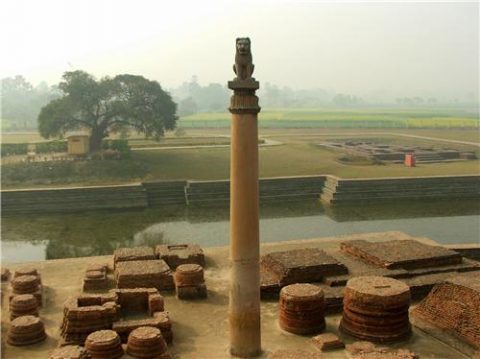
Missionary to Samudragupta
The status and affect of Samudragupta unfold even exterior India. In line with a Chinese language supply, Meghavarman, the ruler of Sri Lanka, despatched a missionary to Samudragupta for permission to construct a Buddhist temple at Gaya. This was granted, and the temple developed into an enormous monastic institution if we imagine the eulogistic inscription from Allahabad, it will seem that Samudragupta by no means knew any defeat, and on this sense he’s known as the Napoleon of India. There isn’t any doubt that Samudragupta forcibly unified the higher a part of India underneath him, and his energy was felt in a a lot bigger space.
Chandragupta II (A.D. 380-412)
The reign of Chandragupta II noticed the excessive watermark of the Gupta Empire. He prolonged the boundaries of the empire by marriage alliance and conquests. Chandragupta married his daughter Prabhavati with a Vakataka prince who belonged to the Brahmana caste and dominated m central India. The prince died, and was succeeded by his younger son. So Prabhavati grew to become the digital ruler. As proven by a few of her land charters, which -betray the affect of the japanese Gupta writing, she managed the Afghans of her kingdom with the assistance of an official despatched by her father Chandragupta. Thus Chandragupta exercised oblique management over the Vakataka kingdom in central India this afforded a fantastic benefit to him. Passing by means of this space Chandragupta II conquered western Malwa and Gujarat, which had been underneath the rule of the Sakas for about 4 centuries by that point. The conquest gave Chandragupta the western coastline, well-known for commerce and commerce. This contributed to the prosperity of Malwa, and its chief metropolis Ujjain appears to have been made the second capital by Chandragupta II.
The exploits of a king known as Chandra are glorified in an iron pillar inscription fastened close to Qutb Minar in Delhi If Chandra is taken into account to be an identical with Chandragupta II, it is going to seem that he established Gupta authority in north-western India and in a very good portion of Bengal.
Chandragupta II adopted the title of Vikramaditya, which had been first utilized by an Ujjain ruler in 58 B.C. as a mark of victory over the Sakas. The courtroom of Chandragupta II at Ujjain was adorned by quite a few students together with Kalidasa and Amarasimha,
It was in Chandragupta’s time that the Chinese language ‘ pilgrim Fahsien (399-414) visited India and wrote an elaborate account of the lifetime of its folks.
Supply: https://style.marietaminkova.com
0 notes
Photo
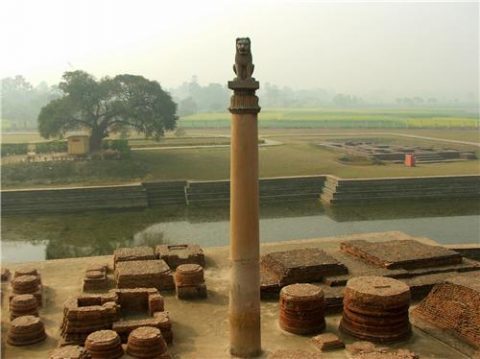
Missionary to Samudragupta
The status and affect of Samudragupta unfold even exterior India. In response to a Chinese language supply, Meghavarman, the ruler of Sri Lanka, despatched a missionary to Samudragupta for permission to construct a Buddhist temple at Gaya. This was granted, and the temple developed into an enormous monastic institution if we consider the eulogistic inscription from Allahabad, it might seem that Samudragupta by no means knew any defeat, and on this sense he’s known as the Napoleon of India. There isn’t a doubt that Samudragupta forcibly unified the higher a part of India beneath him, and his energy was felt in a a lot bigger space.
Chandragupta II (A.D. 380-412)
The reign of Chandragupta II noticed the excessive watermark of the Gupta Empire. He prolonged the boundaries of the empire by marriage alliance and conquests. Chandragupta married his daughter Prabhavati with a Vakataka prince who belonged to the Brahmana caste and dominated m central India. The prince died, and was succeeded by his younger son. So Prabhavati grew to become the digital ruler. As proven by a few of her land charters, which -betray the affect of the jap Gupta writing, she managed the Afghans of her kingdom with the assistance of an official despatched by her father Chandragupta. Thus Chandragupta exercised oblique management over the Vakataka kingdom in central India this afforded an incredible benefit to him. Passing by this space Chandragupta II conquered western Malwa and Gujarat, which had been beneath the rule of the Sakas for about 4 centuries by that point. The conquest gave Chandragupta the western beach, well-known for commerce and commerce. This contributed to the prosperity of Malwa, and its chief metropolis Ujjain appears to have been made the second capital by Chandragupta II.
The exploits of a king known as Chandra are glorified in an iron pillar inscription mounted close to Qutb Minar in Delhi If Chandra is taken into account to be equivalent with Chandragupta II, it’ll seem that he established Gupta authority in north-western India and in a superb portion of Bengal.
Chandragupta II adopted the title of Vikramaditya, which had been first utilized by an Ujjain ruler in 58 B.C. as a mark of victory over the Sakas. The court docket of Chandragupta II at Ujjain was adorned by quite a few students together with Kalidasa and Amarasimha,
It was in Chandragupta’s time that the Chinese language ‘ pilgrim Fahsien (399-414) visited India and wrote an elaborate account of the lifetime of its individuals.
Supply: https://style.marietaminkova.com
0 notes